While the Megacity of Bangalore lacks extensive, formalized public green space (especially in the quickly densifying periphery), it boasts many marginalized landscape conditions and novel ecosystems which beg to be better understood. Suparichit Pile Study No. 1 Is our attempt to engage with one of these landscapes on a cloudy morning in August.
What we Asked:
The Suparichit site is a marginalized landscape in the northeastern periphery of Bangalore, India. Constructed as the byproduct of a rapidly urbanizing mega city, it is a highly complex yet informal territory where excavated earth and construction rubble is illegally dumped on a regular basis, slowly filling in the wetland and lakebed beneath. Living at the margins of the lake are a multicultural patchwork of local and migrant families who subsist in temporary tarpaulin communities as they work to construct adjacent high rise apartment projects. Our approach to this site was not based in an attempt to condemn, formalize or restore, but rather to better understand and embrace the informal and transient realities of this site.
What we Discovered:
Rather than producing a clear or singular reading as a landscape, Suparichit is one of those strange and wonderful places that seems to contain a symphony of opposite and parallel identities: Wasteland. Wetland. Place. Non-place. Land. Landscape. Product. By-product. Each of these monikers is equally valid, and simultaneous. These dialectics are reflected in the in the daily life of the territory, where cattle can still be seen grazing and swimming in the margins of the wetlands, overseen by local Cowboys (“Hasu Kayuva”) who now use the elevated promontory of the piles to keep prospect on their animals. Seeds dispersed by wind and birds and foot traffic give rise to spontaneous trees shrubs and creepers, emerging in the rich substrates of discarded topsoil, concrete rubble or scattered heaps of shattered porcelain. To be on the lookout for cobras is a common warning.
Inscribed into these atomized landscape fragments are stories of all kinds: Of traditional agricultural communities contemplating the return of the monsoons, of contemporary developers crunching their returns on investment, of women carrying the day’s laundry back and forth. The sounds of human laughter mix with the stern thunder of cattle calls, the constant metallic clamor of nearby construction, the guttural cries of migratory cormorants, and the howling of feral urban dogs, all mixing together, yet never quite in harmony. In other words, it is a thriving novel ecosystem that has many layers of use and social-ecological complexity.
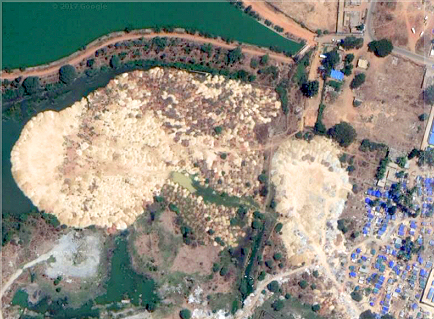
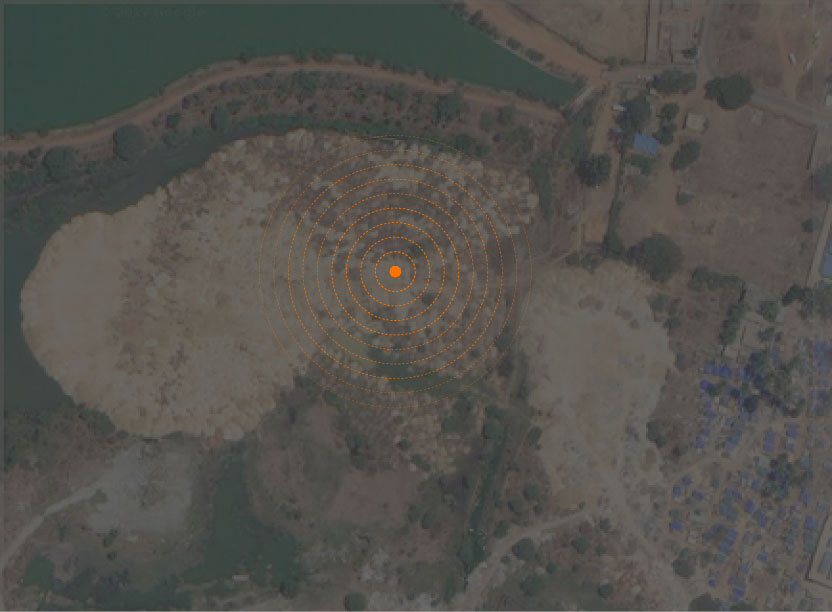
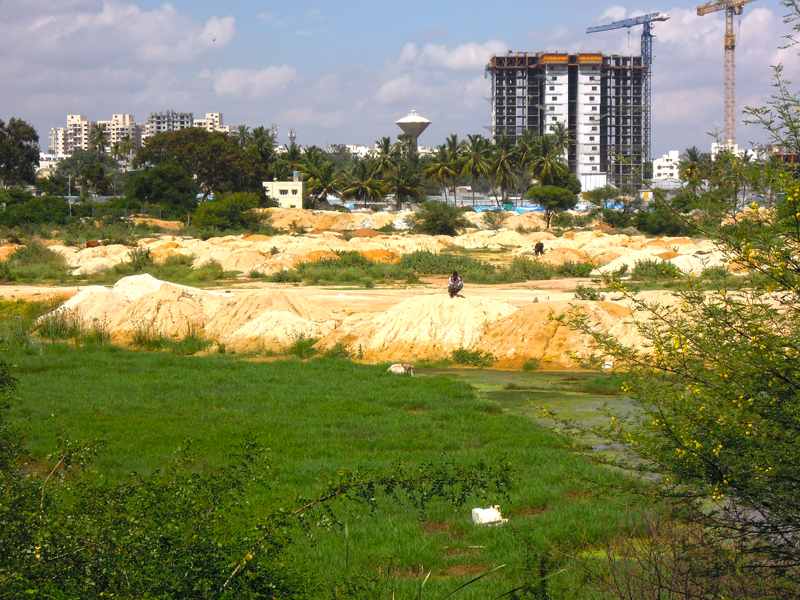

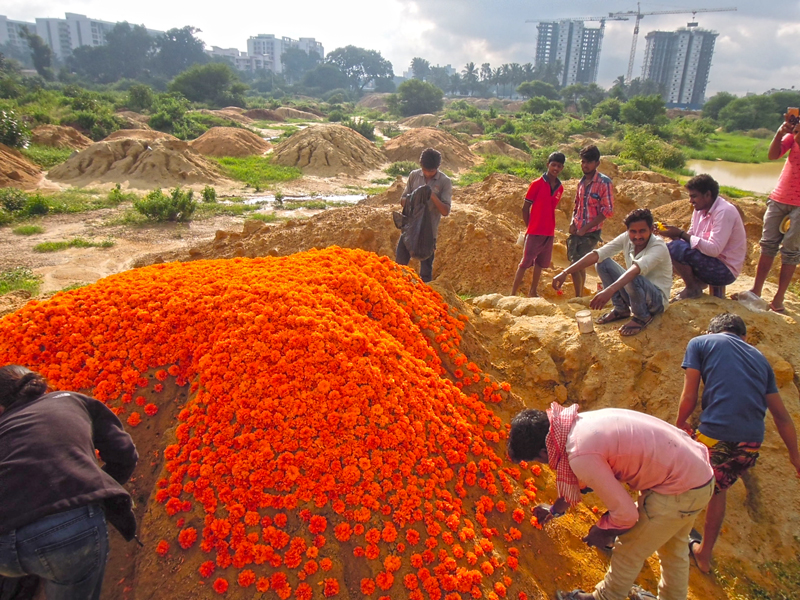
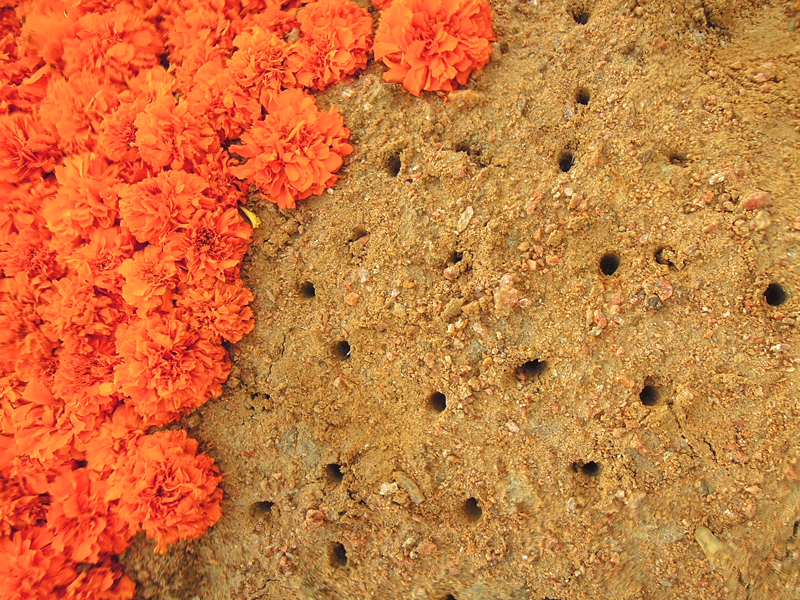
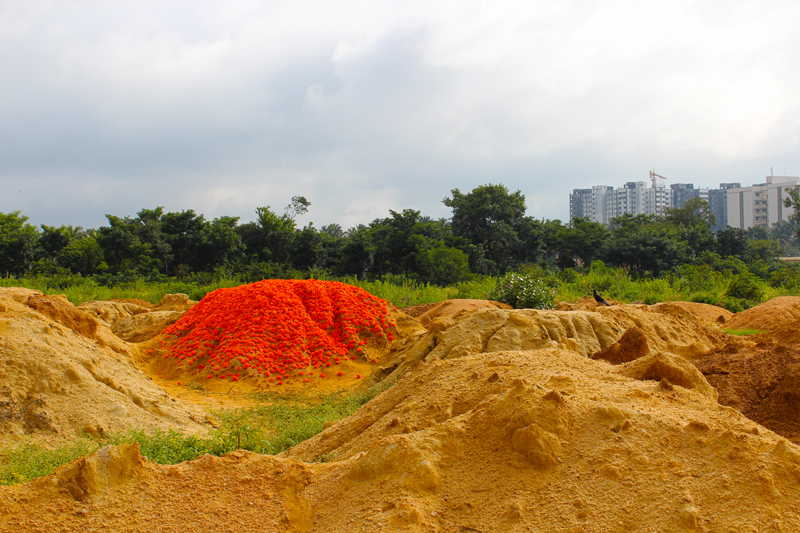
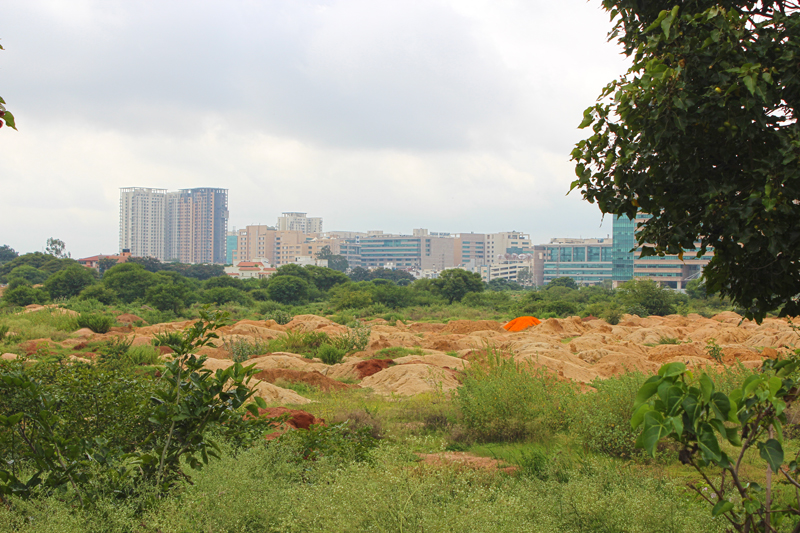
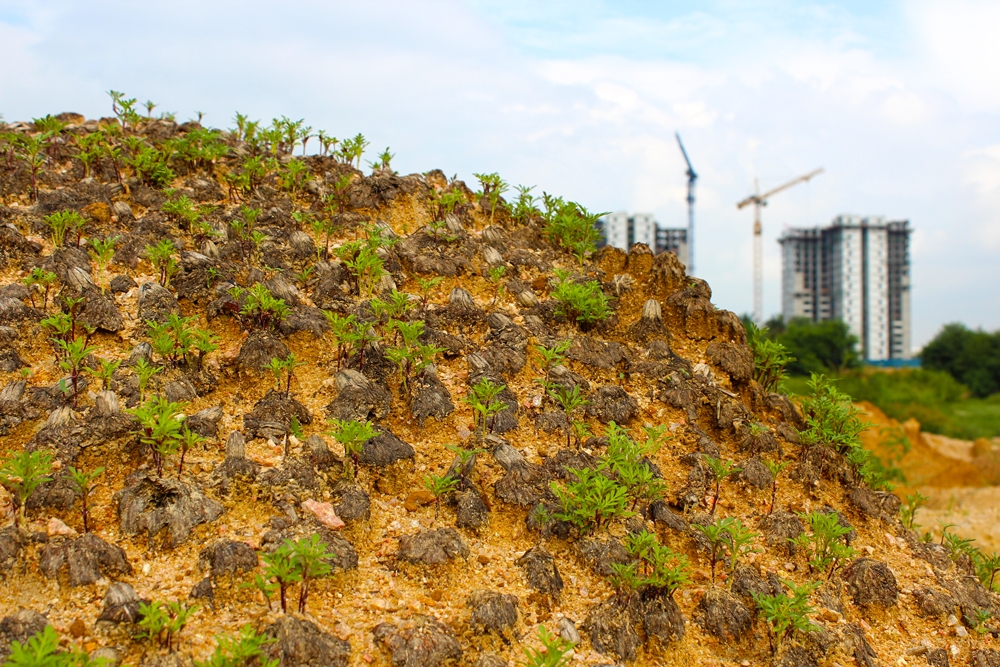
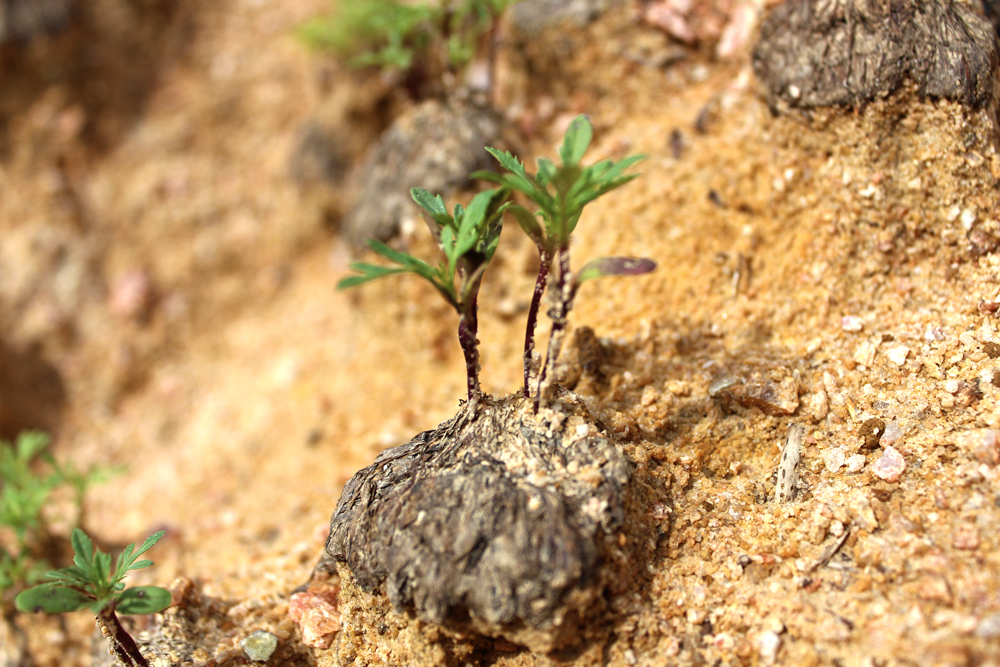
What we Did:
Suparichit pile study No.1 is an experimental socio-ecological landscape intervention which seeks to highlight the complex relationships between human activity and natural process already underway within this territory. The intervention focused on a single pile along an existing informal path of travel through the site. A blanket of Marigold flower heads were methodically inserted to envelop this pile to a state of stark relief from it’s surroundings. This initial gesture created a temporary yet magnetic visual spectacle which invited immediate engagement with local communities, who (despite barriers of caste, language, and culture) were compelled to actively participate in it’s construction.
We choose to highlight the particular role of the Marigold (Tagetes erecta) for it’s striking visual qualities and deeply rooted cultural connotations. This flower holds a distinctive place in Indian cultural practices, used widely in rituals marking thresholds, attracting auspicious energy, and paying homage to the sacred aspects of daily life. With it’s hearty green vertical vegetation, vibrant orange flowers, and prolific re-seeding habit as an annual plant, the Marigolds’ aesthetic and ecological properties provide a means of visually mapping the afterlife of the intervention in both space and time as the site continues to evolve. Through the staging of social-ecological experiments such as this one, we hope to reframe the discourse surrounding sites like these. Not just as places worthy of looking at through new eyes, but worth caring for in new ways.
What Else:
As with other landscape based experiments such as The Metropoliz Future Forest, we intend to track the spatial, cultural and ecological dynamics of this landscape as they occur in real time over the course of the coming months and years. A more extensive written exploration of this piece is available at the following link:
Phillips, D. “Bangalore Pile Study: Curiosity and Intervention in the Margins of a Megacity.” The Nature of Cities (online), 2018

